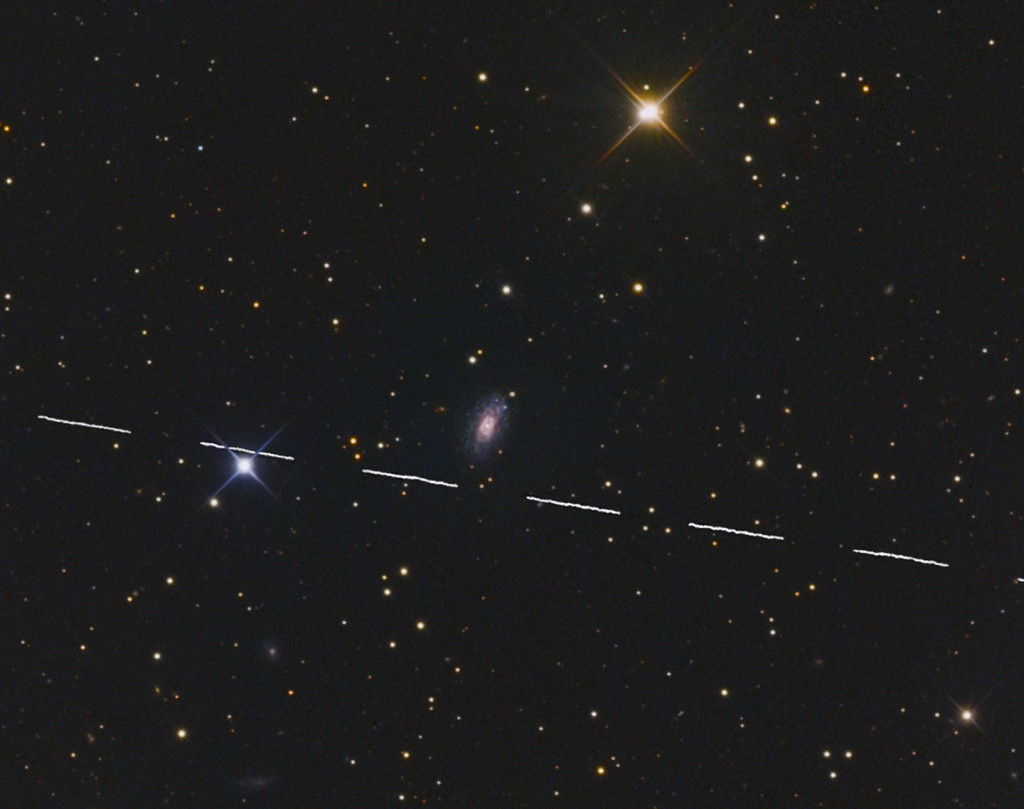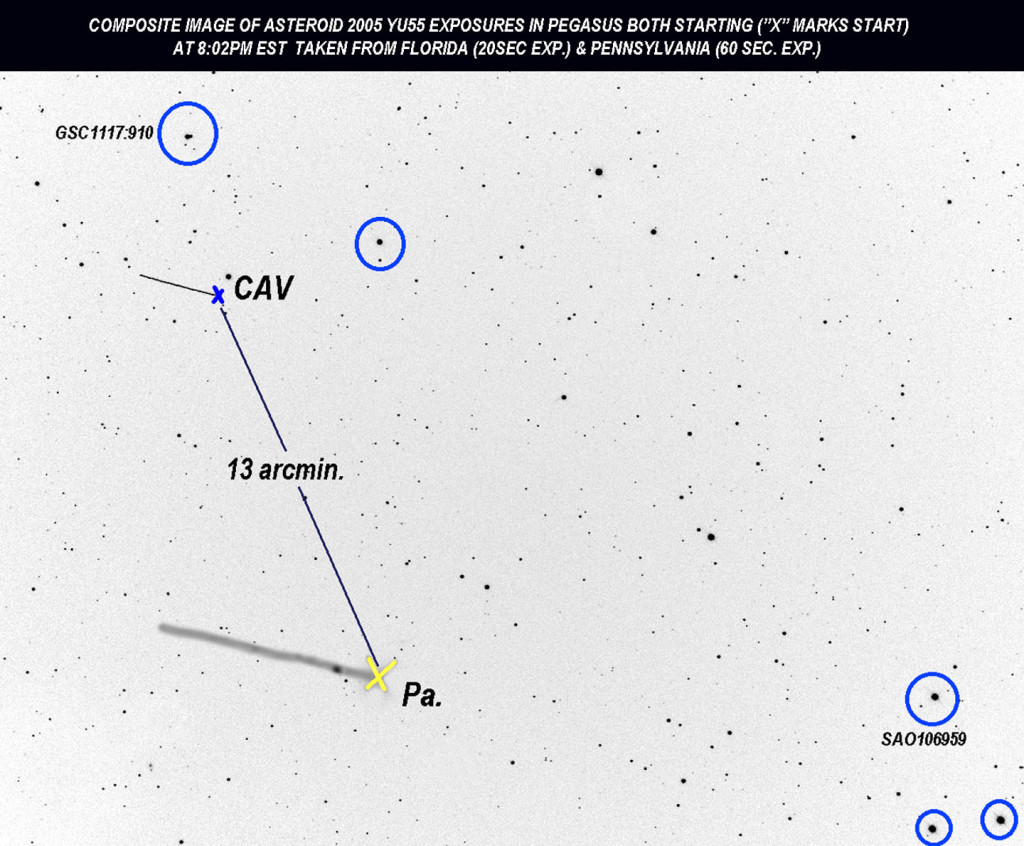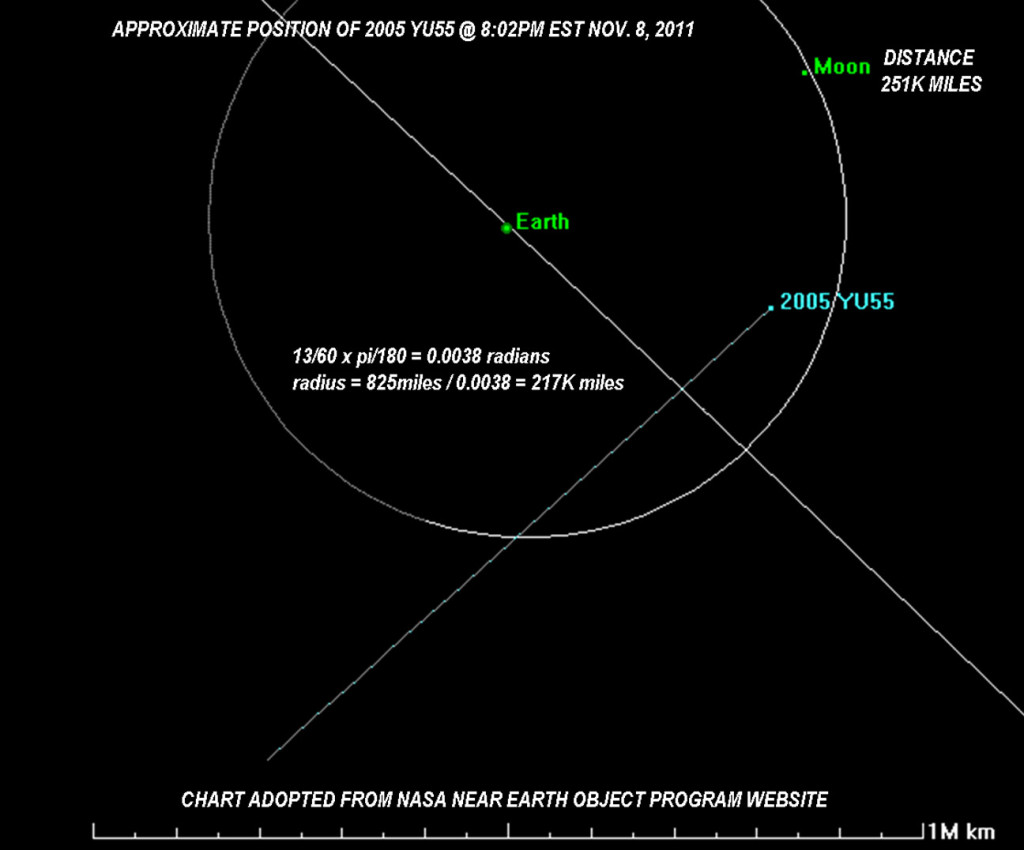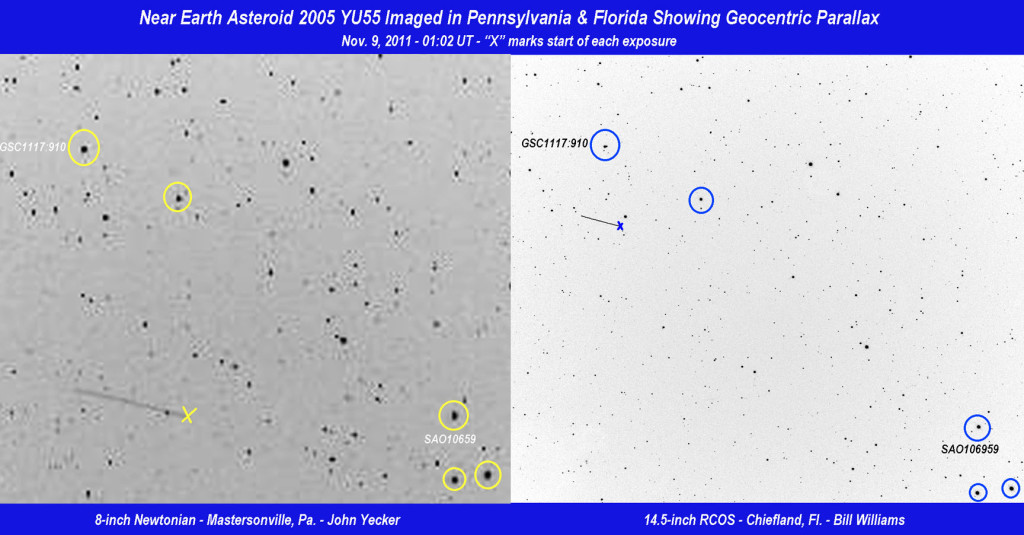



As you may recall, the closest approach to Earth by a rogue asteroid 2005 YU55 received considerable publicity in November, 2011. Numerous movies showed up on YouTube including one by yours truly (link below) and an even cooler, more creative, one by John Yecker (link below). John was able to load the 2005 YU55 ephemeris data into TheSky program. He plugged the numbers into his SiTech drive and was able to track this thing for over an hour. The rates weren’t perfect, he states, so the asteroid drifts to the lower corner. He was playing with different rates during the movie so it seems to change directions at times. His sequence began at 9:33 EST and goes until 10:32 EST. Great effort John!
My movie simply consists of a series of 20 second exposures beginning at 10:30PM EST over a duration of about 5 minutes as the asteroid passes next to galaxy NGC 7290. At the time I was imaging the asteroid astrostud Barry Riu suggested I later that night recapture the NGC 7290 field in RGB color to add some spice to my monochrome composite image of the asteroid and galaxy. However, the Moon was close and almost full so I waited several weeks later when the Moon was absent and captured about 2 hours of 2X2 LRGB data on the NGC 7290 field using the 14.5-inch RCOS and superimposed the asteroid track. In this image, the asteroid can be seen passing close to 13th mag. barred spiral galaxy NGC 7290 and in between the blue and yellow stars of the “Fall Albireo” 12 arcmin. apart consisting of 8.72 mag. spectral AO blue star SAO107947 and 6.5 mag. spectral G9III yellow star SAO107941. The yellow “star” in the “Fall Albireo” is actually a true physical double listed in Struve’s catalog (2908) and Aitken’s catalog (ADS 15967 AB) and can be discerned in the attached image. The astrometric satellite Hipparcos measured the distance between yellow A&B at 9.08″. Next time I am at Chiefland, I will observe this area visually with my newly-cleaned 13-inch Coulter!
Even more challenging was the effort to triangulate the distance of asteroid 2005 YU55 from Earth using geocentric parallax during this fantastic close approach. I needed someone else to image the asteroid from a location far away from Chiefland, Florida at the same time as me. That way, we could compare the location of the asteroid against the starry background which we would consider infinity. At first, it didn’t seem like anyone took the bait when I went imager-fishing in an e-mail I sent in November but my bobber suddenly went underwater when John Yecker sent a series of images taken at different times! These included one image starting at 08:02PM EST (01:20 UT, Nov. 9) taken at exactly the same time by me from Chiefland, Florida (see mosaic above)!! When the John’s and my images are overlaid (see composite), the starting points superimposed on the background stars are 13 arcminutes (0.21 deg.) apart as measured in The Sky program!! Knowing the distance between John’s camera in Mastersonville, Pa. and my camera at Chiefland, Fl. is 825 miles apart, the distance of the asteroid at that very moment could now be calculated!
There are several ways to figure the distance of 2005 YU55 based on the angle of 13 arcmin. and the separation of cameras of 825 miles. The easiest way (for my simple mind) is to consider the 825 miles as the tiny arc of a huge circle (see circle math refresher link below) that has a very acute angle of 0.21 degrees. So the ratio between the arc A subtended by an angle and the radius R is, by definition, the measure of the angle in radians. For an angle theta of 13arcmin., the conversion is theta (radians) = 13/60 X pi/180 = 0.0038. There are 0.0038 radians in our circle which has an arc of 825 miles. In our case, if the arc is 825 miles ground separation of the imagers, then the altitude should be given by the radius r = 825 / 0.0038 or 217,000miles! Since the Moon was 251,000 miles away from Earth at that time, we did, in fact catch images of this asteroid when it was within the Moon’s orbit! An orbit chart from NASA diagrammatically is consistent with our calculated distance of 217,000 miles (see orbit chart above)! That is close! If that asteroid had been 217,000 miles closer, we would not be having this discourse!
http://www.youtube.com/watch?v=jxVm9Y14VyE – YouTube Movie from Chiefland (see it full screen)
http://youtu.be/_dgP3vceIaY – John Yecker’s tracked 2005 YU55 movie!
http://betterexplained.com/articles/intuitive-guide-to-angles-degrees-and-radians/ — circle math refresher
http://neo.jpl.nasa.gov/news/news171.html – Cool NASA 2005 YU55 Trajectory News